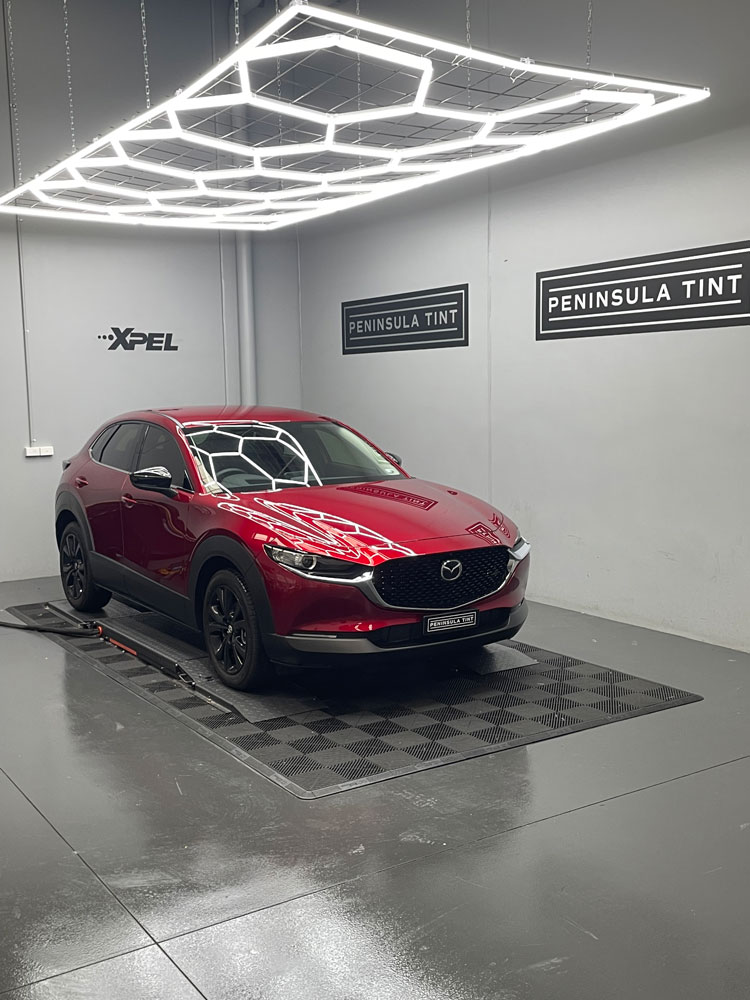Using paint protection film (PPF) offers several benefits over trying to match factory paint, particularly when dealing with intricate colours like Mazda's Soul Red. PPF ensures a uniform finish, enhanced durability, and simpler maintenance, preserving your car's original look and safeguarding its paintwork from damage. Although PPF may have a higher initial cost, the long-term advantages make it a valuable investment for many car owners. On the other hand, replicating complex colours like Soul Red can be challenging, even for skilled paint technicians, and may not provide the same level of protection and consistency as paint protection film.
Implementing paint protection film, or PPF, is the ideal solution for maintaining the original appearance of your car while also shielding its paintwork from potential damage. PPF presents a more consistent finish, as the entire car is enveloped in a single sheet of film, eliminating the risk of colour mismatch between panels or sections.
Furthermore, PPF is more resilient and damage-resistant than factory paint. Designed to protect your car's paint from scratches, stone chips, and other daily driving hazards, PPF is also UV-resistant, preventing fading and discolouration of factory paint over time.
In terms of maintenance, PPF has the edge over factory paint. Although it can be washed and waxed like factory paint, it requires less upkeep and is less susceptible to damage from washing or detailing.

Overall, applying paint protection film is a superior option to attempting to match factory paint, especially for protecting your car's paintwork and maintaining its original appearance. While PPF may come with a higher upfront cost, its long-term benefits make it a smart choice for numerous car owners. In contrast, accurately reproducing complex colours such as Mazda's Soul Red can be difficult even for professional paint technicians and may not offer the same level of protection and uniformity as PPF.